This ultra-light vehicle – a kind of “motorcycle” on an air cushion – was built in Bataysk at the city SUT. Its advantages are simplicity of design, high maneuverability and quite acceptable speed – up to 65 km/h. The propulsion system is especially rationally designed: the M-111 and Izh-P2 engines operate at optimal temperature conditions due to the air flow created by the engine propellers.
The original car of the Batai guys became one of the most notable exhibits of the All-Russian meeting of young innovators and designers that took place in Yaroslavl.
Every year, the agriculture of our country receives more and more powerful and productive equipment. The time has long passed when the number of tractors working in the fields was given in the reports of the Central Statistical Office in terms of a 15-horsepower machine. Is it possible to compare this figure with the power of the modern Kirovets, whose engine develops more than 200 hp? With.!
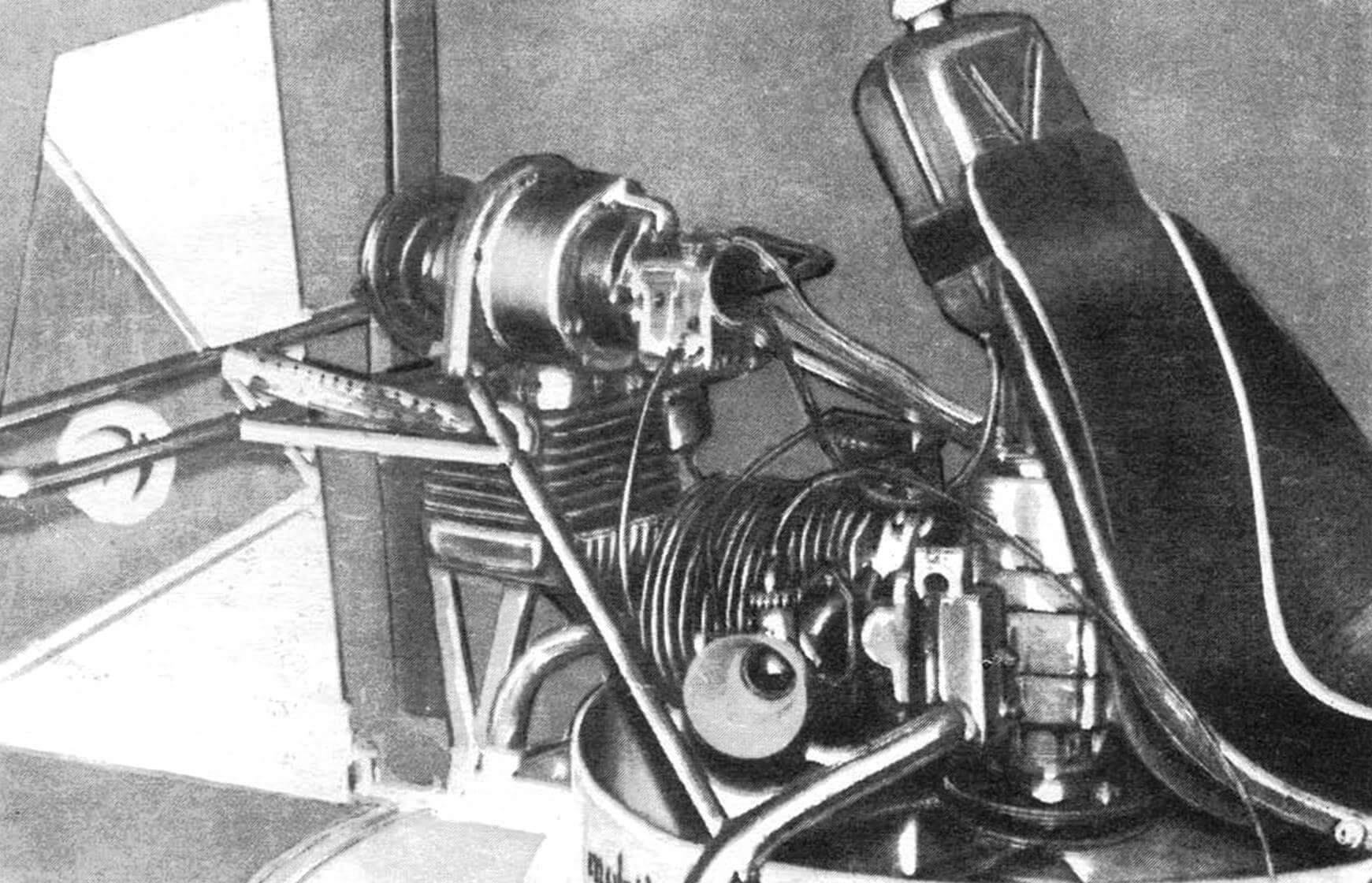
But the increased attention of industry to energy-powered machines does not mean at all that the need for light, maneuverable and economical equipment has disappeared – in walk-behind tractors for processing small paddocks, in manual walk-behind mowers for harvesting grass in copses and clearings, and finally, in cheap and all-terrain vehicles for transportation across the vast lands of collective and state farms.
It was precisely this kind of machine that the guys studying at the Bataysk city station for young technicians under the leadership of Mikhail Nikolaevich Shitikov decided to construct. The young designers reasoned when choosing the type of future vehicle, something like this:
— A serial motorcycle is primarily a summer vehicle; you can’t get enough UAZs for everyone. And wheeled vehicles of the traditional type will not pass everywhere, especially in the spring thaw. Only hovercraft have such “all-weather” capability. This means that it must be built. This “motorcycle without wheels” will be useful for agronomists, postmen, doctors, and rural machine operators.
It is no coincidence that this small-sized hovercraft is called a motorcycle. Its weight, speed, power and lifting capacity are almost the same as those of these popular two-wheeled vehicles. And it’s even easier to make than a motorcycle. The base of the AVP is a platform-hull on which two power plants are mounted – propulsion and injection, the driver’s seat and the controls of the device.
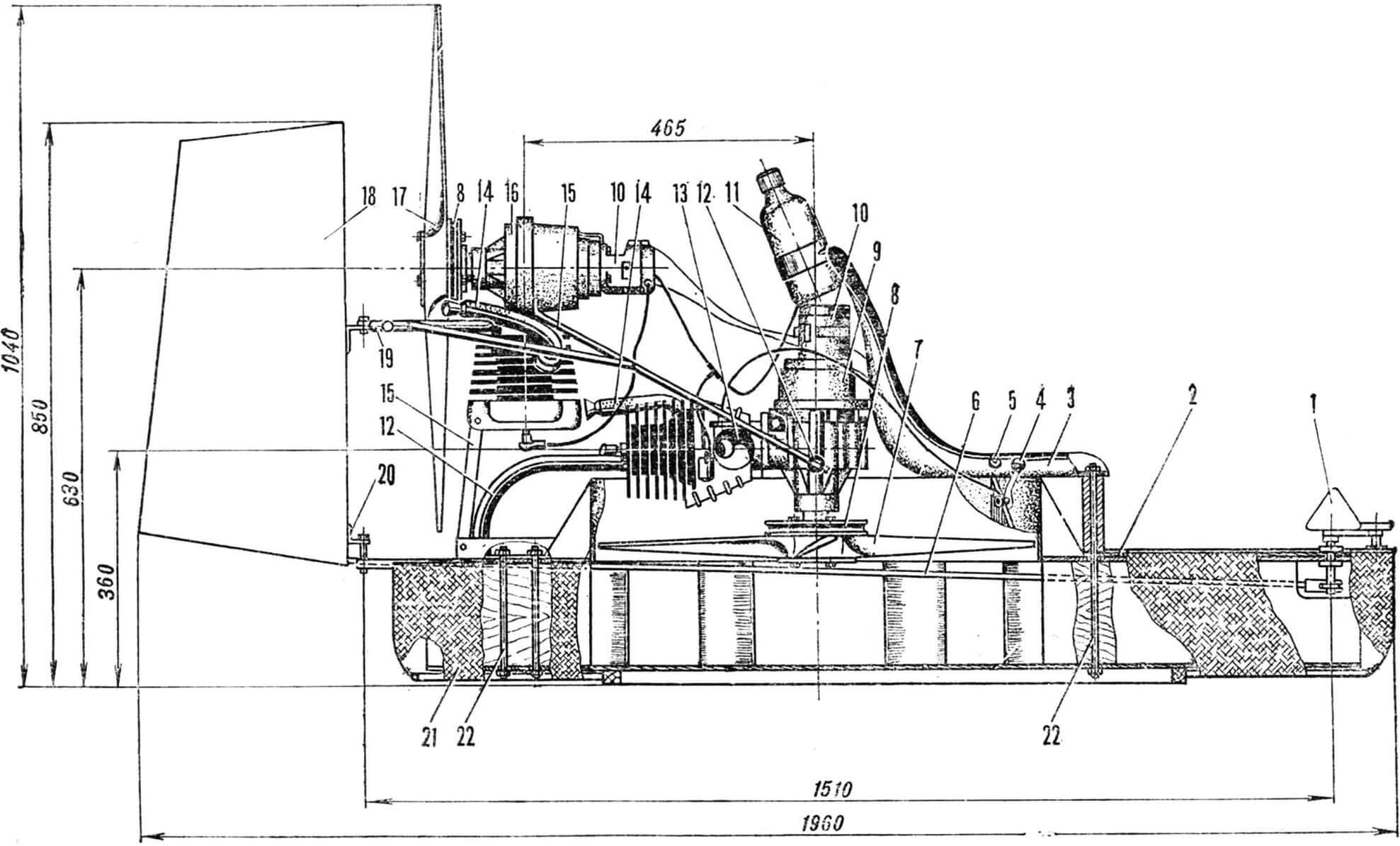
1 — pedals (rudder drive), 2 — platform-hull, 3 — seat, 4 — throttle sector, 5 — supercharger engine ignition switch, 6 — rod (rudder drive), 7 — supercharger blade, 8 — starting pulley , 9 — supercharger motor, 10 — magneto, 11 — fuel tank, 12 — support arches, 13 — carburetor air intake, 14 — exhaust pipes-mufflers, 15 — engine mount, 16 — main engine, 17 — propeller, 18 — rudder , 19 — propeller guard, 20 — rudder hinges, 21 — skirt, 22 — studs.
The platform-hull is made entirely of wood: its deck, bottom, cover and aerodynamic ring of the supercharger are made of four-millimeter plywood, the guide posts that orient the air flow are made of linden bars 40 mm thick (their maximum thickness is located at a third of the length, counting from the nose), corners and support skis are birch. All these elements are assembled using casein glue, only the aerodynamic ring is molded to the body with strips of fiberglass impregnated with an epoxy binder. Reinforcing gussets are also attached to epoxy. Finally, the body is sanded, impregnated with drying oil and painted.
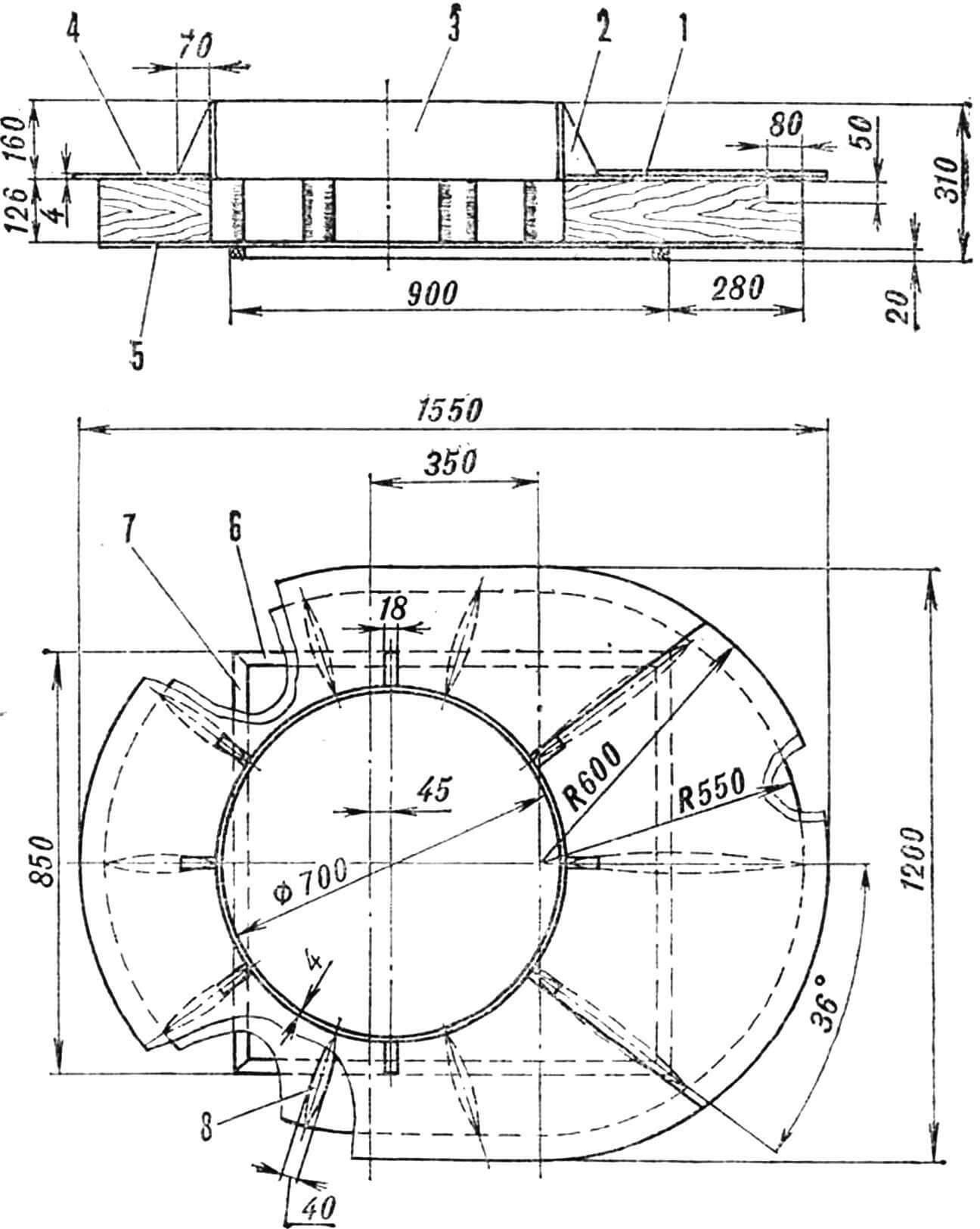
1 — overlay, 2 — reinforcing gusset (8 pcs.), 3 — aerodynamic ring of the supercharger, 4 — deck, 5 — bottom, 6 — longitudinal support ski, 7 — transverse support ski, 8 — guide posts.
The skirt is an important structural element involved in organizing the air cushion. It is made of a canvas strip attached to the deck with small nails. The bottom of the skirt is hemmed and tied with a cord.
The driver’s seat (from the kart) rests on an aerodynamic ring and is attached with an 8mm stud (front) and to the supercharger housing (rear). Above the backrest there is a 2-liter polyethylene canister—the fuel tank. It is raised so high so that fuel flows to the carburetors by gravity. One refueling is enough for approximately 15 – 20 minutes of engine operation (depending on the mode).
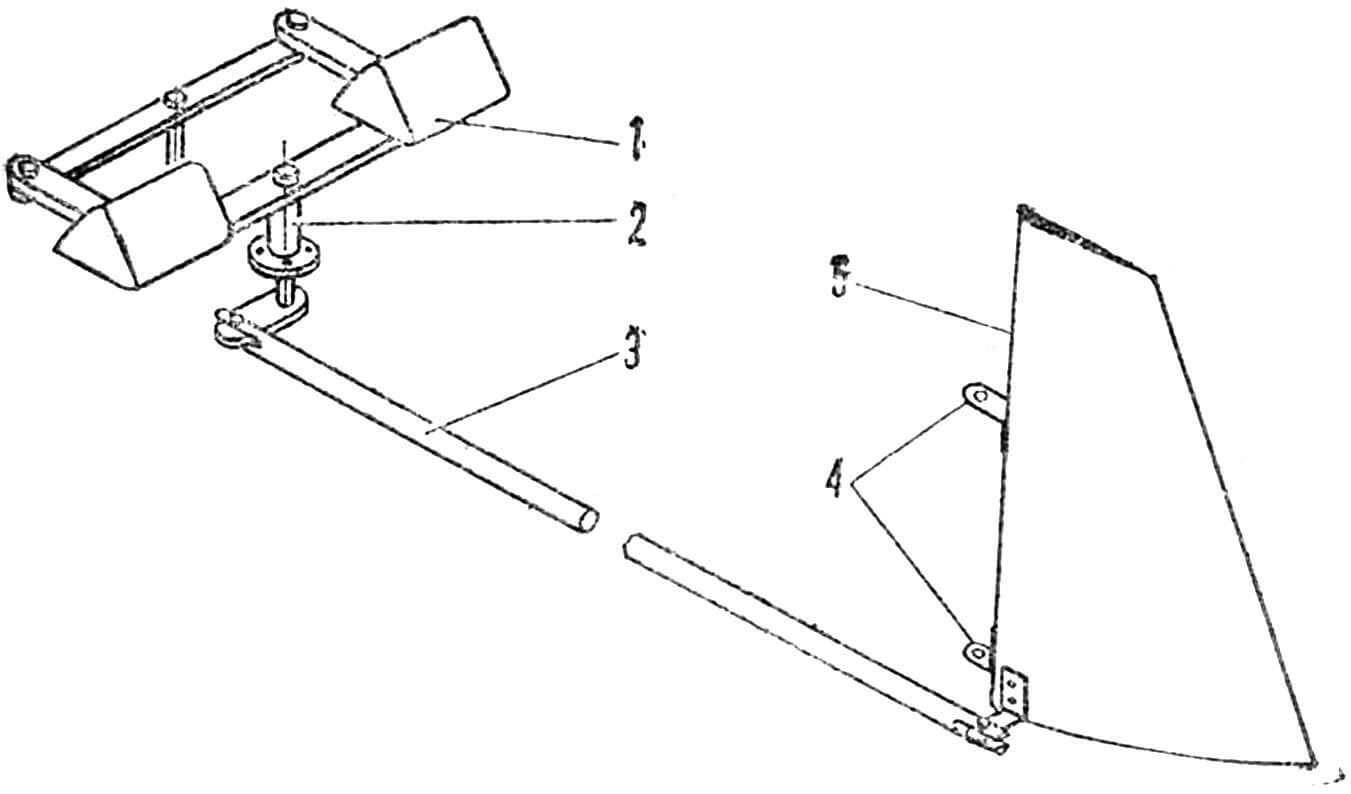
1 — parallelogram pedals, 2 — steering shaft bushing, 3 — rod, 4 — rudder hinges, 5 — rudder
A modified IZH-112 engine was used to drive the supercharger. The essence of the modifications is as follows: the volume of the combustion chamber has been reduced – the compression ratio has increased to 8.5, the engine power has increased to 18 hp. With. at 4500 rpm. The gearbox is cut off and the stock generator is replaced with a magneto from a tractor starter. The engine is equipped with an intake diffuser and exhaust pipe mufflers.
Attached to the crankshaft shank is a propeller hub with a starting pulley. The four-bladed propeller with a diameter of 670 mm and a pitch of 700 mm is made of two identical two-blade propellers connected crosswise. Material: birch. It is attached to the engine hub with three M8 studs and an M12 centering bolt. The static thrust of such a propeller is 40 kgf.
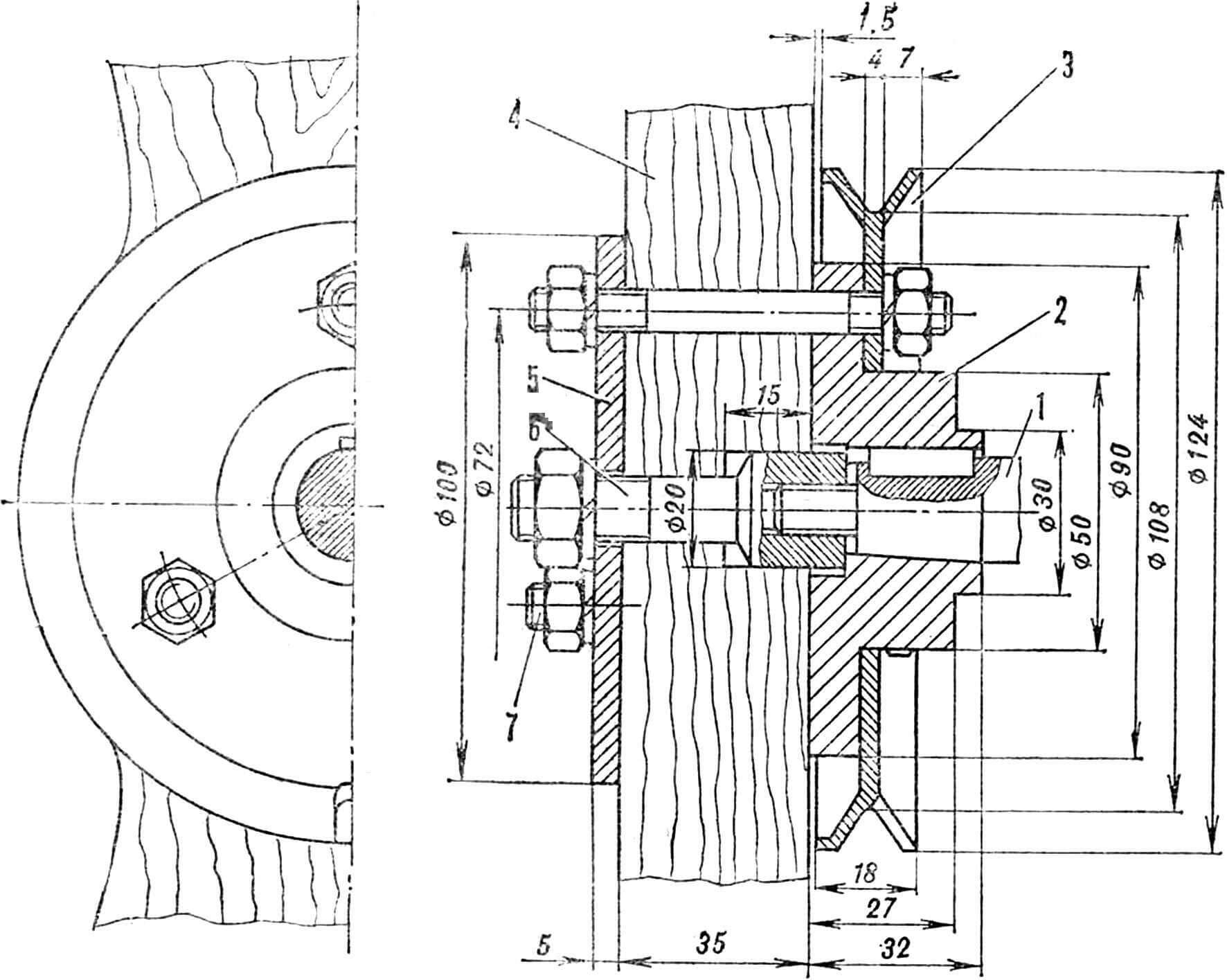
1 – motor shaft, 2 – hub, 3 – starting pulley, 4 – propeller, 5 – washer, 6 – M12 centering bolt, 7 – M8 stud
The engine is installed above the platform on three tubular arcs Ø 33 mm. The two side arches are attached to the crankcase via rubber gaskets, the rear one is attached directly to the cylinder head.
The main engine is from the M-111 motorcycle. Its power is 11 liters. With. at 5500 rpm. The modifications are almost the same: the gearbox is cut off, a magneto, diffuser and muffler are installed, an air screw with a hub and a starting pulley is attached to the crankshaft shank. Screw diameter 800 mm, pitch 400 mm, static thrust – 30 kgf.
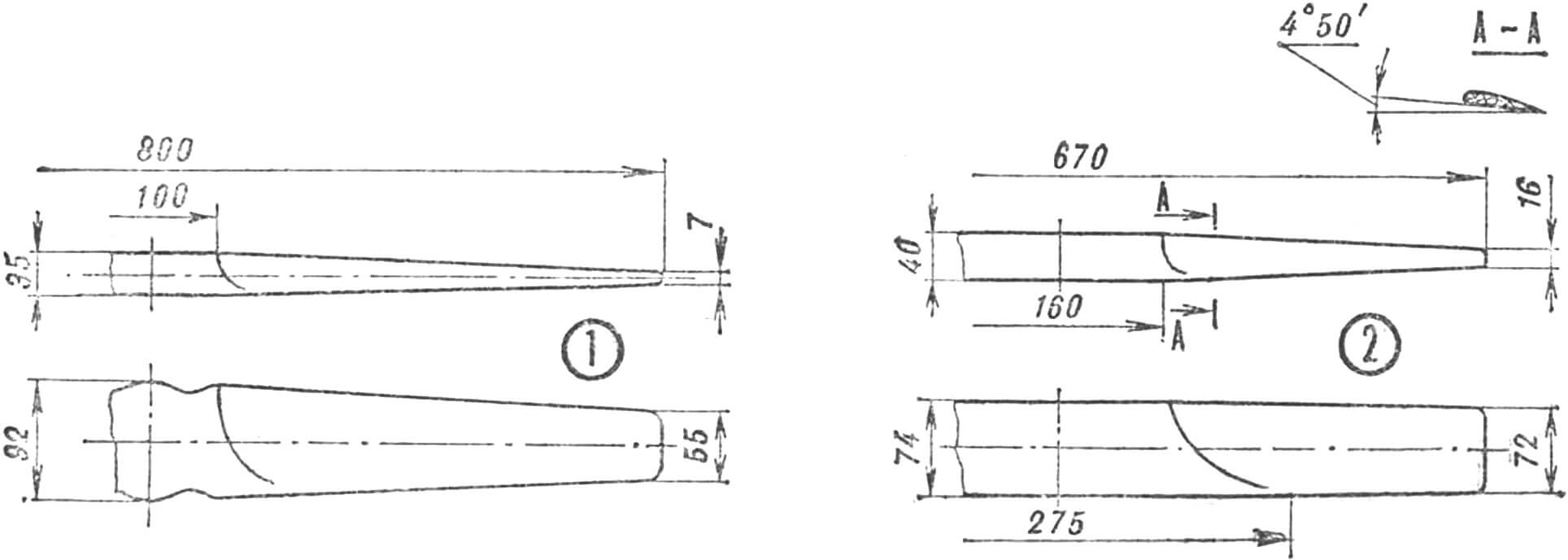
1 – main and 2 – supercharger.
The engine is installed with the cylinder down, which allowed to lower the center of gravity and reduce the dimensions of the entire device. However, this arrangement has a significant drawback: the spark plug is sometimes flooded with fuel, and the engine stalls. Therefore, the way out of the situation seems to be to use a cylinder head from an M-107 motorcycle, on which the spark plug is mounted on the side.
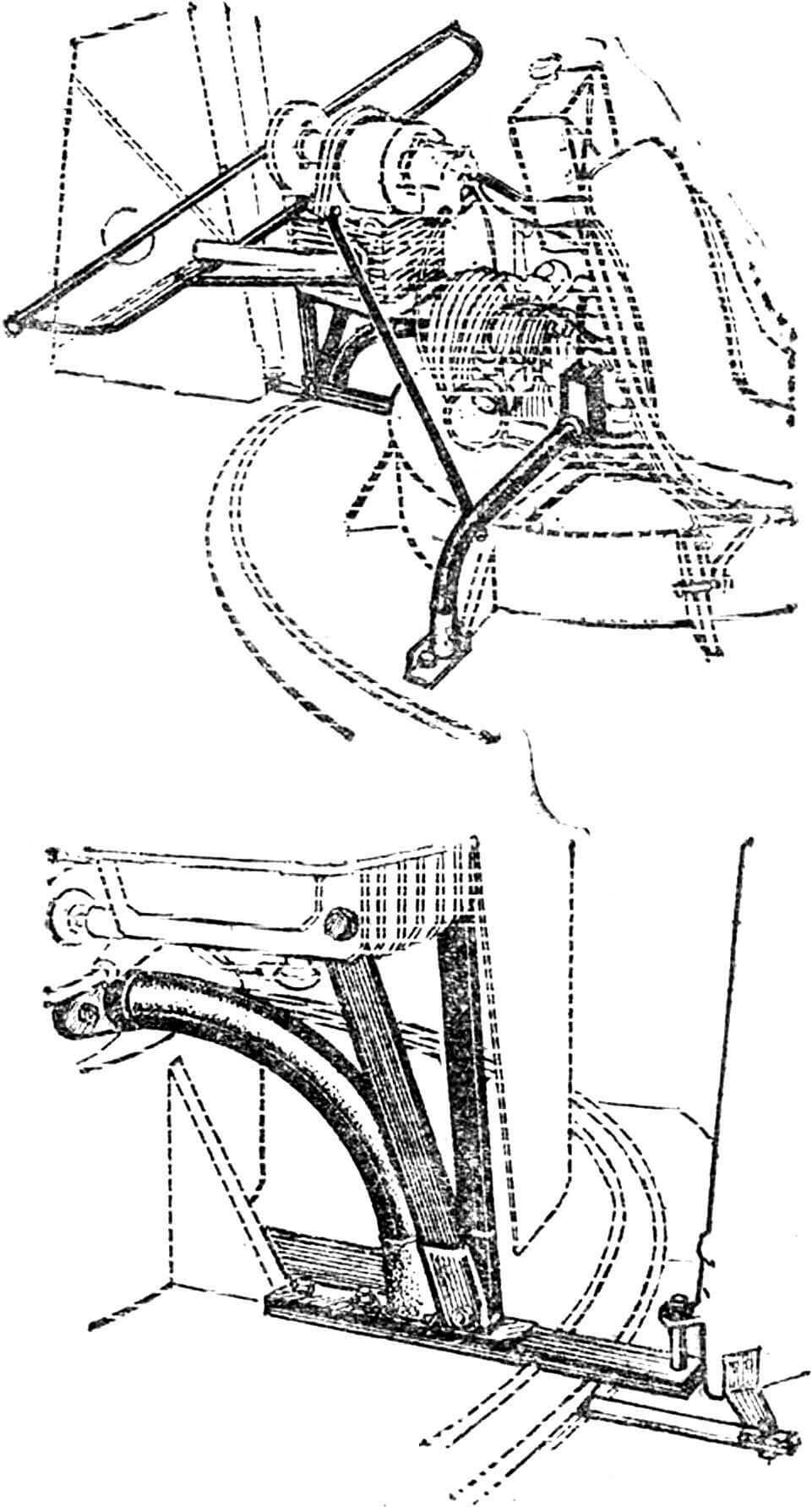
Control is concentrated at the driver’s seat. On the right is the throttle sector and the supercharger ignition switch, on the left is the throttle sector and the main engine toggle switch.
In front of the driver’s seat there is a foot control station for the device. A pedal parallelogram rotates around a vertical axis fixed in the platform, the thrust from which (duralumin pipe Ø 14 mm) passes under the deck to the tail rudder. The rudder is installed behind the propeller guard and operates in the flow thrown by its blades.
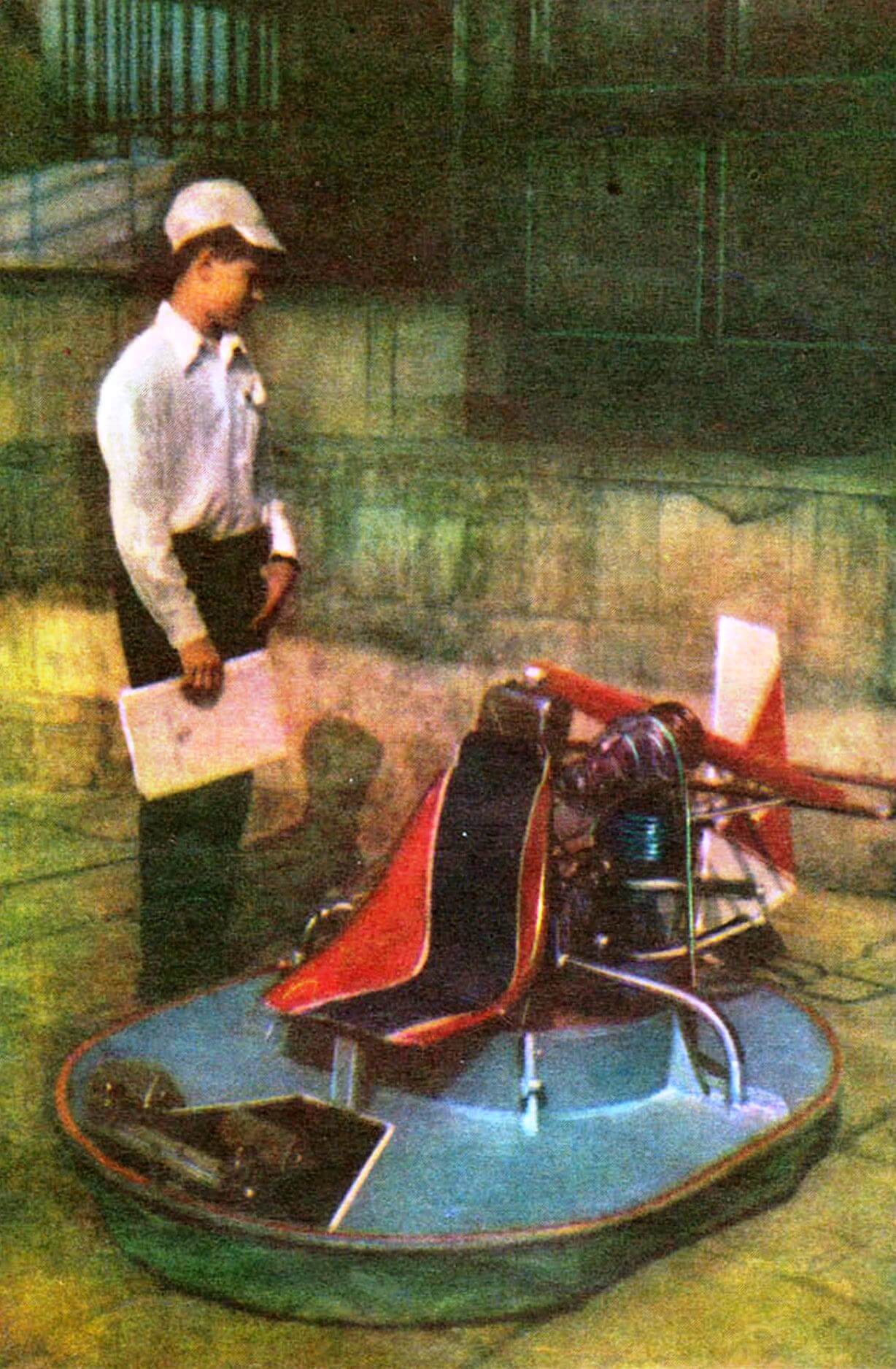
The steering wheel frame is made of pine slats (maximum thickness 18 mm at the toe of the steering wheel), covered with nylon stocking and covered with two layers of mica paper.
The weight of the “motorcycle” is 70 kgf. With a driver weight of 65 – 75 kgf, the device is capable of moving at a height of 5 – 6 cm at a speed of 65 – 70 km/h.
Now about how to use the machine. The main engine starts first. After it starts working steadily, the supercharger motor turns on. Let it run at low speeds, after which the driver takes his place.
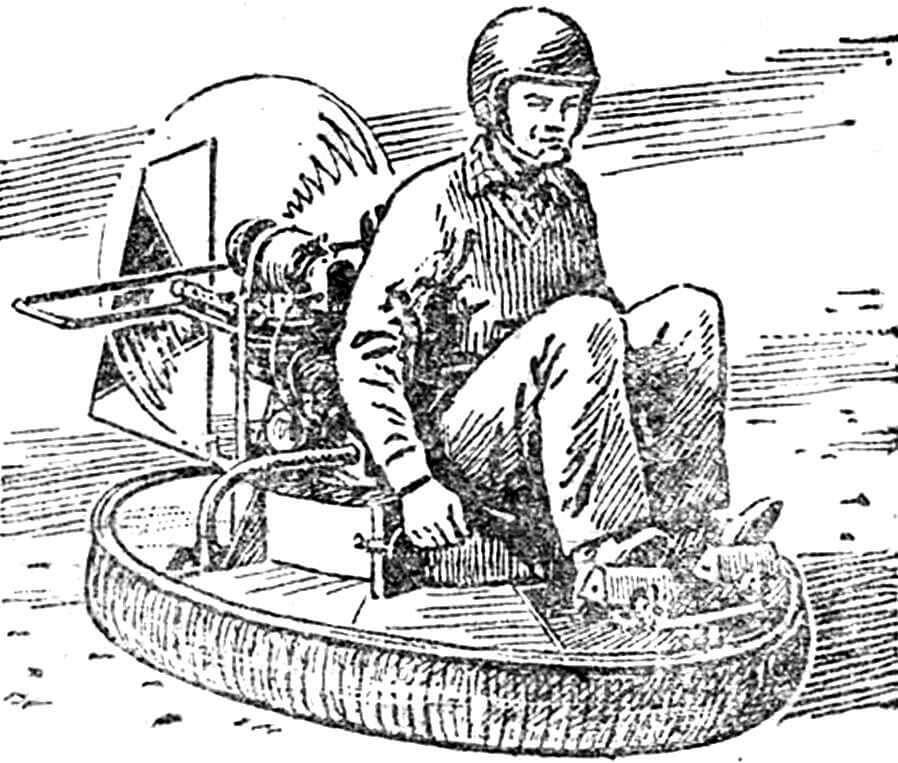
During movement, control is carried out by changing the position of the center of gravity of the device. For a slight change in course, a slight deviation of the driver’s body in one direction or another is sufficient. When there is a sharp change in course, the steering wheel also works. We must remember that the device reacts to steering wheel deviation with some delay. This is the uniqueness of driving a “motorcycle” on an air cushion, unlike any other type of ground transport.
M. Shitinov, Bataysk, Rostov region.



